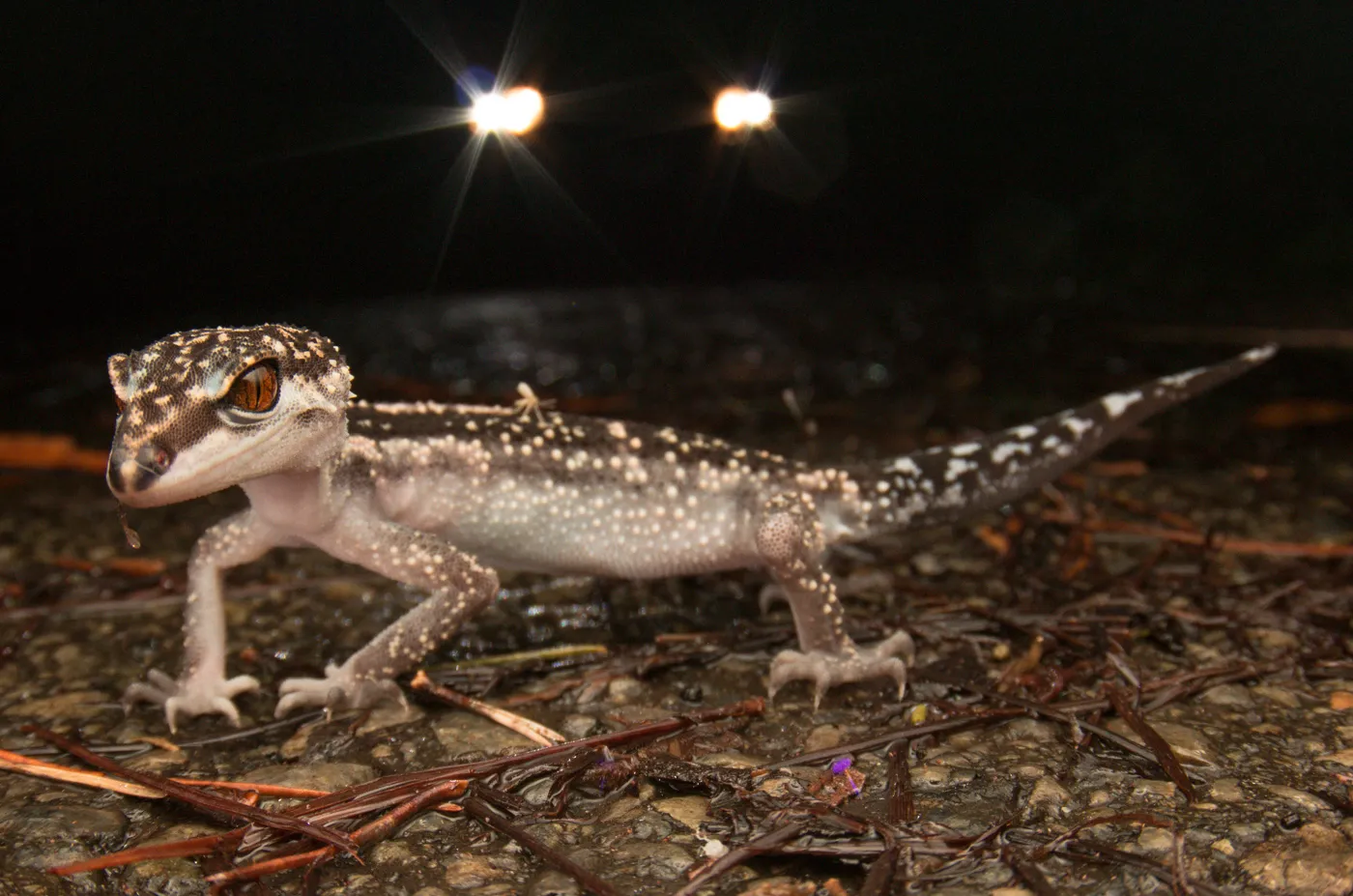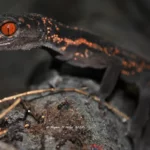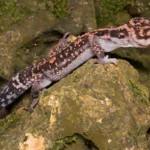Journey with us to the Ryukyu Islands of Japan, home to the enigmatic Kuroiwa Ground Gecko. These small but captivating lizards, teeming with unique characteristics, face an uncertaain future. This article delves into the intriguing world of the Kuroiwa Ground Gecko, exploring its size, appearance, habitat, and the ongoing conservation efforts aimed at preventing its extinction. Prepare to be amazed by the wonders of this cryptic creature.
Kuroiwa Ground Gecko: Description and Size
The Kuroiwa ground gecko, a resident of Japan’s Okinawa Islands, stands out for its intriguing features. Unlike many gecko species, it is active both during the day and night, expertly navigating the subtropical forests it calls home.
These geckos are relatively small, measuring between 15-18 cm long—about the size of a pen—and weighing a mere 7-17 grams. Their most striking feature? The distinct lines that adorn their backs, particularly prominent in geckos from southern Okinawa.
These nocturnal hunters play a vital role in their ecosystem by consuming small invertebrates. Their diet helps maintain a delicate balance within their environment. However, the Kuroiwa ground gecko faces a perilous situation. Habitat loss, coupled with other threats, has earned it a protected status in Japan.
The Kuroiwa ground gecko’s preference for subtropical forests in karst limestone areas below 450 meters further restricts its range. Sadly, two subspecies, the Goniurosaurus kuroiwae sengokui and the Goniurosaurus kuroiwae toyamai, are critically endangered. Urgent conservation efforts are underway to safeguard these unique creatures and ensure their survival for generations to come.
What Defines the Kuroiwa Ground Gecko’s Appearance?
The Kuroiwa ground gecko possesses several distinctive features that set it apart from other geckos. Its small size, measuring only 15-18 centimeters in length, makes it an inconspicuous inhabitant of the subtropical forests.
One of the most notable features is the pattern of thin lines running down its back, resembling a delicate and intricate artwork. These lines are especially prominent in geckos from the southern regions of Okinawa.
Adding to its unique appearance, the Kuroiwa ground gecko’s skin is covered in minute bumps and granules, giving it a rough texture. Their coloration typically ranges from olive brown to reddish brown on their backs, blending seamlessly with the forest floor. The underside is typically lighter, with shades of yellow or cream. Some individuals even display dark blotches or spots, further enhancing their camouflage.
How Big Do Kuroiwa Ground Geckos Get – Exploring Size Variations
The size of a Kuroiwa Ground Gecko can be surprising. Reaching an average length of 15-18 cm, these geckos are about the size of a standard pencil. Their weight is even more astonishing, ranging from a mere 7-17 grams, lighter than a AA battery.
While size variations are minimal, geckos from the southern part of Okinawa often exhibit more defined lines along their backs compared to their northern counterparts. Don’t let their diminutive size fool you—these geckos are skilled predators, playing a crucial role in regulating invertebrate populations within their ecosystem.
Despite their importance, two subspecies of Kuroiwa ground geckos are locked in a fight for survival. Conservation efforts are critical to protecting these fascinating creatures and ensuring the continuation of their lineage.
Where Does the Kuroiwa Ground Gecko Live? Unveiling Its Habitat
The Kuroiwa Ground Gecko exhibits a strong preference for a very specific habitat: subtropical karst limestone forests located below an elevation of 450 meters. These humid forests, characterized by dramatic rock formations and lush vegetation, provide the perfect sanctuary for these secretive creatures.
Within these forests, the Kuroiwa Ground Gecko thrives. The dappled light and shadows of the forest floor offer ideal camouflage during the day, while the abundance of insects and other small invertebrates provides ample sustenance during their nocturnal hunts.
The intricate connection between the Kuroiwa Ground Gecko and its habitat highlights the importance of preserving these specialized environments. Even slight alterations to their habitat can have significant and potentially devastating consequences for these fascinating creatures.
Did you know that the Tokashiki gecko is a critically endangered species? And would you believe that the Kuroiwa ground gecko is active during both the day and night?
Key Points about the Kuroiwa Ground Gecko:
- Stealthy hunters found exclusively on Okinawa Islands of Japan, active both day and night.
- Display distinctive lines along their backs, particularly noticeable in geckos from southern Okinawa.
- Small-sized, reaching only 15-18 cm long and weighing 7-17 grams.
- Play a crucial role in the ecosystem by controlling populations of small invertebrates.
- Habitat restricted to subtropical forests in karst limestone areas below 450m elevation.
- Two subspecies, sengokui and toyamai, are critically endangered due to habitat loss and other threats.
- Conservation efforts are paramount to ensuring their survival.
Etymology:
- Scientific name: Goniurosaurus kuroiwae
- Named in honor of T. Kuroiwa, who collected the first scientifically described specimen (holotype).
Other Key Information:
- The Kuroiwa’s ground gecko, also known as the Ryukyu eyelid gecko, is a protected species in Japan.
- They lay 2 eggs at a time in monthly intervals from May to August.
- Historically believed to be poisonous, these geckos are actually harmless insectivores.
- In the Okinawan language, they are called “Jihab” or “Ashihab.”
Potential Research Areas:
- Adaptations that allow the Kuroiwa’s ground gecko to thrive in karst limestone habitats.
- Ecological interactions between the Kuroiwa’s ground gecko and its prey.
- Geographic distribution and population dynamics of the critically endangered subspecies.
- Effectiveness of current conservation efforts and emerging threats to the species.
By understanding the Kuroiwa Ground Gecko’s unique characteristics, habitat, and the challenges it faces, we can better appreciate the importance of protecting this remarkable creature and its fragile ecosystem.
- Mastering Leader in Spanish: The Complete Guide - April 19, 2025
- Uncovering Surprising Parallels: England Size Compared to US States - April 19, 2025
- Old Mexico Map: Border Shifts 1821-1857 - April 19, 2025
















